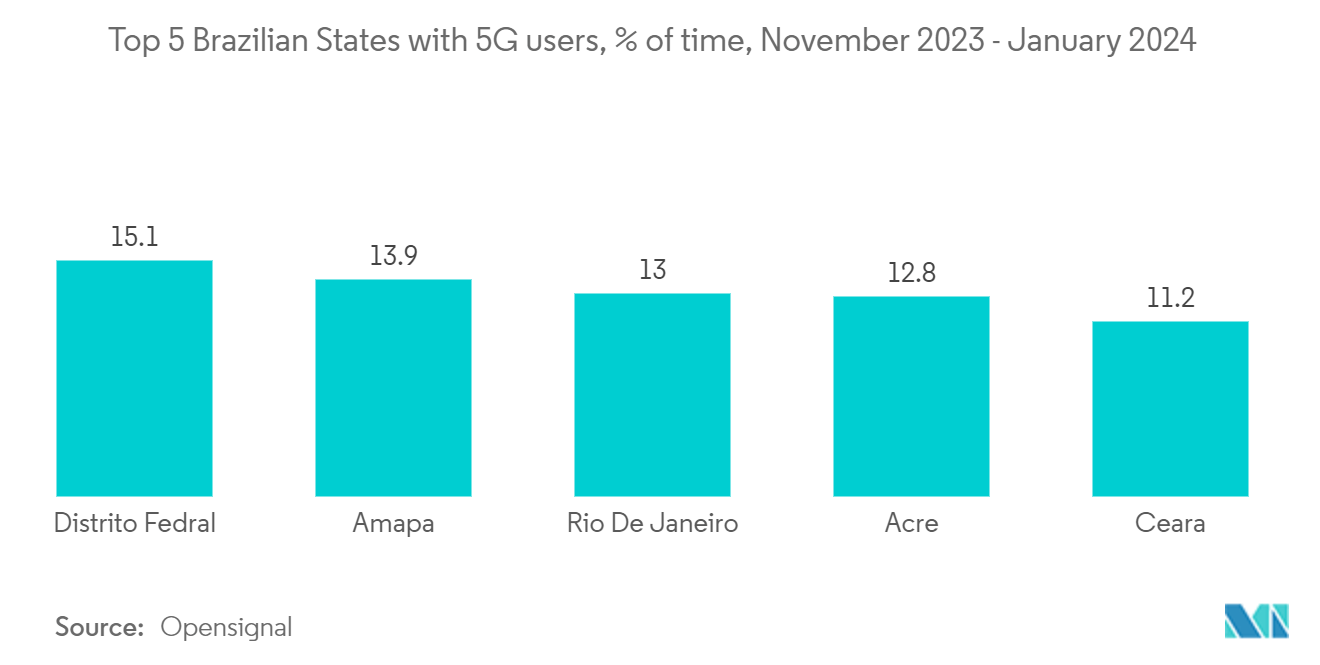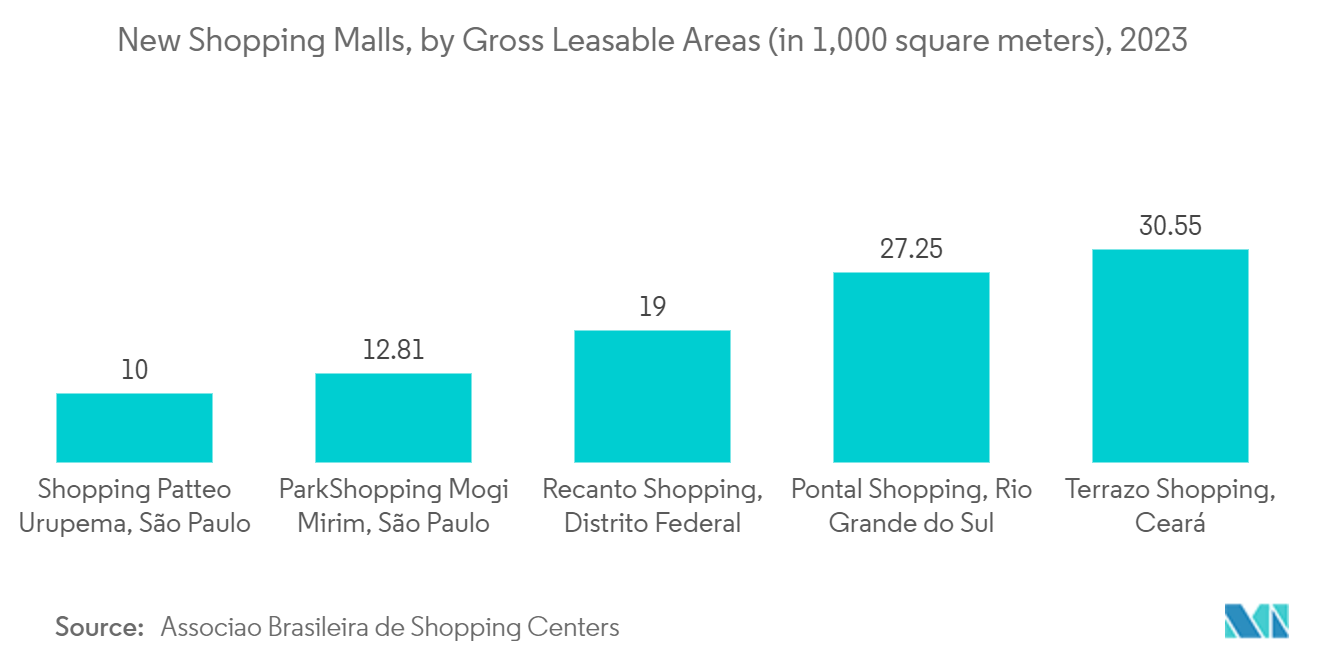Market Trends of Brazil Video Surveillance Industry
IP Cameras Significantly Gaining Popularity
- The demand for advanced surveillance solutions is surging in today's security landscape. Surveillance cameras, crucial for public safety and protecting infrastructure, face challenges, with video quality topping the list. Innovative video enhancement solutions are now pivotal, enabling security experts to secure clear, stable video streams, even in challenging environments.
- With a focus on poverty, sustainable development, and global governance, Brazil is set to shine a spotlight on innovation and digital transformation in 2024. Opensignal reports that, across Brazilian states, most are witnessing significant enhancements in 5G availability. Notably, Amapá and Acre stand out with the highest absolute year-on-year increases, each boasting a 5.5 percentage point rise. These states, alongside Distrito Federal and Rio de Janeiro, lead the pack in 5G availability. This heightened focus is driving the increased adoption of IP cameras in Brazil's security sector.
- In a notable move, São Paulo, in July 2023, announced plans to deploy thousands of surveillance cameras equipped with facial recognition. This initiative, part of the broader Smart Sampa project, underscores Brazil's push toward modern surveillance. São Paulo, with a population of 12 million, is the largest city in the Southern Hemisphere. By 2024, the city aims to install up to 20,000 cameras, integrating an equal number of third-party and private cameras into its network.
- In 2023, Axis and Vivo forged a partnership, focusing on enhancing quality and security while balancing scalability and cost-efficiency. Vivo, when identifying opportunities to modernize its stores, turned to Axis technology. By adopting fisheye cameras, Vivo not only improved image quality but also reduced the number of cameras required. This led to tangible benefits, including fewer licenses, reduced cabling, and savings in switch ports and data storage.

Rising Popularity of Video Surveillance in Commercial Segment
- The migration of people from rural to urban areas is a key driver of demand for commercial properties, especially in major Brazilian cities like São Paulo, Rio de Janeiro, and Brasília. This urban shift, coupled with a growing population, is fueling the need for office spaces, retail hubs, and residential complexes in city centers and their peripheries. As more individuals move to urban areas, the infrastructure must adapt to accommodate the increasing population, leading to a rise in construction and development projects. This trend is not only reshaping the urban landscape but also creating numerous opportunities for investors and developers to capitalize on the growing demand for commercial real estate.
- Furthermore, Brazil's expanding middle class and their heightened spending are boosting the demand for contemporary retail spaces. Responding to this, developers and investors are increasingly focusing on creating innovative retail centers tailored to evolving consumer tastes. Rising disposable income among the middle class has led to a shift in consumer behavior, with more people seeking modern and attractive shopping environments. This has prompted a wave of new retail developments, such as big and spacious shopping malls designed to meet the expectations of a more discerning customer base, offering a mix of dining, shopping, and entertainment options that cater to a range of preferences.
- As of August 2023, the Associação Brasileira de Shopping Centers reported that the Shopping Leste Aricanduva claimed the title of Brazil's largest shopping center, boasting a substantial 248,701 square meters of gross leasable area (GLA). In stark contrast, the runner-up, Shopping Interlagos, lagged significantly behind with a GLA of just 145,000 square meters.
- Given the prevalence of strategies like cash theft, 'sweet-hearting,' and return fraud in such highly populous areas, video surveillance plays a pivotal role. Leveraging AI and analytics, this technology empowers mall and store owners to not only detect suspicious activities but also swiftly respond, identify culprits, and fortify against future incidents. Real-time alerting features ensure heightened situational awareness, enabling proactive responses to potential threats.
- The integration of advanced surveillance systems in retail environments is becoming increasingly essential as it helps maintain security, reduce losses, and enhance the overall shopping experience for customers. By staying ahead of potential security threats, retailers can create a more secure and safer environment for both employees and shoppers, ultimately contributing to the success and sustainability of their businesses.


